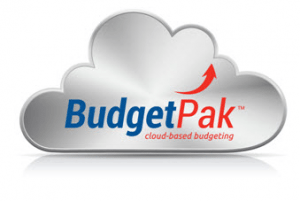Is this the way you feel?
Freedom of choice
Is what you got
Freedom from choice
Is what you want
–Devo
Sometimes we do crave freedom from choice. I know that I am often relieved when I enter a search term on Amazon that turns up only three items. (Try searching for “USB hard drive”; you are presented with 64,055 products to browse through. You’d better like using faceted search; you’re going to need it!)
But freedom from choice is not in fact always what we want. Consider your software vendor’s SaaS hosting options. If they have only one “option”, you may not feel great about the “decision” that’s been made for you.
Some vendors offer only one approach: Host with us. There’s nothing wrong with that, as long as it works for you. But it would be nice to have the option of “hosting yourself” (better known as on-premises hosting). Even if you do go with the vendor’s hosting, at least you’ve made a purposeful decision and have not been forced into it.
So what are the pros and cons of on-premises hosting versus vendor hosting? The logistical advantages of vendor hosting are well known:
- Nothing to install or maintain. Your IT staff is not called into service to install, upgrade, or service an external vendor’s application.
- No equipment to buy, configure, and maintain.
- No networking issues. Your IT staff is not required to insure that each user throughout the organization, regardless of location, can reach and be authenticated by the software application and its servers.
- (If the application is not exposed outside the company network) No VPN access required to access the application from home or on the road.
- No need to secure and back up the application data; this is done by the vendor.
However, it may be that your organization does not allow vendor hosting (excepting perhaps well-known companies such as ADP). Vendor hosting may be disallowed either as a matter of blanket company policy, or because IT is not wholly comfortable with vendor hosting in general (or this vendor’s hosting specifically). In this case the advantages of on-premises hosting are not logistical, but ones of control:
- Your organization maintains complete control over application data, applying and enforcing security, backup, and disaster recovery policies. You do not have to trust an outside vendor’s abilities and performance in these areas.
- Your organization maintains complete control over user access to the application (and IT staff access to application data stored on servers). You can turn off access simply by (say) removing a user from an Active Directory group.
Of course, each choice – vendor hosting or on-premises hosting — comes with tradeoffs. In the case of vendor hosting, the disadvantages are basically the flip side of the on-premises hosting choice:
- If you host with the vendor, your organization does not have internal control over application data; you will rely upon the vendor for security, backup, and disaster recovery. (Of course, SaaS vendors are very aware of this concern, and take great pains to prove that their data centers meet Tier 2 or 3 requirements, and also meet customer-auditable security, backup, and failover requirements.)
- It’s not going to be easy to integrate your network’s authentication and authorization into the remote application’s login. Not all SaaS vendors even support it, and you’ll probably end up needing a 3rd party application to tie the two systems together. So it’s likely that your users will need to have an additional login and password to access the vendor’s SaaS application.
And for on-premises hosting, the disadvantages are also the flip side of the vendor hosting option and are logistical in nature:
- You will have to buy and maintain equipment and software (unless you already have it and it has excess capacity), such as web servers and databases servers.
- Your IT staff must have the skill set and time to install and maintain the on-premises application, and to set up and maintain the related network connectivity and user authentication.
- Your IT staff must have the skill set and time to install and maintain the application infrastructure – web servers, load balances, firewalls, database servers, and so on.
- If the application is not exposed outside the company network, your IT staff must configure and maintain VPN access for the application users.
- Your IT staff must take care of backups and disaster recovery for the application data.
- For all of the above, you will need your IT staff’s skill set to meet or exceed that of the vendor’s IT staff, which would otherwise be doing these things on your behalf.
While this list may seem daunting, many organizations in fact already have it in place. Banks, for example, will already have a Tier 3 data center, a proven backup and disaster recovery plan in place, and a skilled IT staff. For such organizations, adding another vendor application to their data center is not a monumental effort.
Neither vendor hosting nor on-premises hosting is perfect or meets everyone’s needs. Make a choice – but make it your choice.
XLerant is a SaaS software solutions company that builds and implements innovative, practical and incredibly powerful browser-based budget preparation software for mid-sized and large organizations and higher education institutions, energizing a “Culture of Budget Accountability” among users. The company serves customers in several industries. XLerant’s premier budgeting and planning application, BudgetPak, replaces spreadsheet-based budgeting and provides maximum user flexibility and financial controls. Improved communication, greater ownership of the numbers and increased transparency enable companies to better manage financial performance throughout the fiscal

